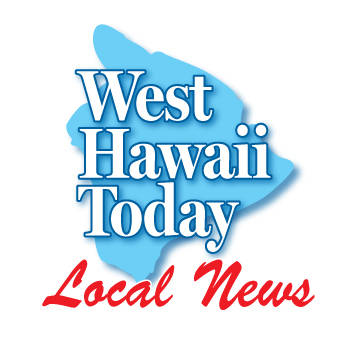Deep well repairs, developments upcoming for North Kona

KAILUA-KONA — Four deep wells remain offline in North Kona, but repairs are likely to commence on at least one of them in the next two months.
KAILUA-KONA — Four deep wells remain offline in North Kona, but repairs are likely to commence on at least one of them in the next two months.
Work is currently required at Honokohau, Hualalai, Waiaha and Palani deep well sites. Keith Okamoto, manager-chief engineer at the Hawaii County Department of Water Supply, offered the Water Board a status update at its monthly meeting Tuesday.
“At this point, it looks like Honokohau is going to be our priority to get online first,” he said. “After that, (the other three) are all not quite as firm as far as the time frames.”
The pump and motor for Honokohau are on island. The department is waiting on the arrival of a shroud, a pipe installed around the motor to help cool it, which Okamoto said is expected in mid-September.
“We’re going to push the contractor to start jamming right after that,” he said, “So I’m guessing (work will begin) end of October.”
An action group convened by the Water Board last year to examine and mitigate a rash of deep well failures in North Kona sought out the consultant Brown and Caldwell, which offered several suggestions to improve performance including employing shrouds more frequently.
DWS has utilized the devices in the past, but Okamoto said varied pump and motor sizes at times made the use of a shrouds unworkable.
Other considerations for the Honokohau repair, and those to follow, are additional power monitoring equipment to gauge power quality and discussions with manufacturers about adding temperature censors to motors, as both power surges and overheating can knock wells offline.
Okamoto said moving forward, the department wants to shrink pumping capacity to between 700-1,000 gallons per minute to allow more room for a shroud and create less strain on the parts. However, the equipment headed down the hole at Honokohau will remain 1,400 gpm capacity.
DWS currently operates 14 water sources in the region and plans to build out two more projects itself — Waiaha No. 2 and Kona No. 2. Both remain in the preliminary engineering phase with no precise time tables.
Waiaha No. 2 is part of an exploration for improvements at the Waiaha site, which has been inoperative since the summer of 2017 when a botched extraction sent a pump, motor and accompanying parts plummeting down the well, where they remain.
DWS believes it can use the same well, which formerly operated at 1,400 gpm, with a 700 gpm setup despite being unable to retrieve the lost equipment. Waiaha No. 2 would be a second 700 gpm well on the same site — a model recommended by the action group for future well construction to improve redundancies and uniformity, rendering equipment replacement more prompt and less complicated.
The Hawaiian Ocean View Estates deep well, which has suffered problems over the last several months, is up and running again, Okamoto reported Tuesday.
“That one has additional, supplemental monitoring equipment installed, so that helps us track it,” he told the Water Board. “So far so good, knock on wood. It’s operational, even with the challenges that we have out there. But we’ll continue to monitor that and keep an eye on that, as well.”
Meanwhile, North Kona is under a 10 percent voluntary water conservation until more wells come back online.
More water sources coming to Kona
Organizations and agencies outside of the DWS are often tasked with construction of water sources as part of land developments.
Such is the case for the Hawaii Housing Finance and Development Corporation (HHFDC) and its Kamakana Villages at Keahuolu project, the master plan for which includes 2,330 overall residential units. So far, 170 affordable units have been constructed.
The agency is working on one site, Well No. 4, with new Kamakana developer Stanford Carr, said Kent Miyasaki, HHFDC housing information specialist.
HHFDC will team up with the Natural Energy Laboratory of Hawaii Authority (NELHA) to split the cost of development for a second water source in the region, dubbed the OTA Well Project.
According to the draft environmental assessment for the project, the price is estimated at $12,630,000 and comes with a minimum pumping capacity requirement of 1 million gallons per day.
Public comments on the draft EA are due by Sept. 24 and can be submitted to NELHA via email at alexander.leonard@hawaii.gov or by regular mail at 73-4460 Queen Kaahumanu Highway, No. 101, Kailua-Kona, HI 96740-2637.
Commenters are also asked to copy the consultant, Planning Solutions, Inc., which can be contacted via email at makena@psi-hi.com or regular mail at 711 Kapiolani Blvd., Suite 950, Honolulu, HI 96813.
NELHA’s involvement is connected to a need for potable water to finish the build out of its Hawaii Ocean Science and Technology Park.
NELHA will plan, develop and construct the OTA Well Project, after which it will hand over management and maintenance responsibilities to DWS. Although NELHA is in charge for the foreseeable future, Okamoto said DWS will offer input on well construction to get ahead of potential problems like those faced by other deep wells in North Kona.
“Once it gets to that phase, we’ll get involved with reviewing the plans and say ‘Hey, this is what we learned with our experience in Kona,’” he said. “We’re not going to accept whatever is not in line with the recommendations that we’ve seen coming from our consultant.”



amazing you need to pay consultant for info??????what about overpaid city workers and so called management pukes paid to know this and work with this….